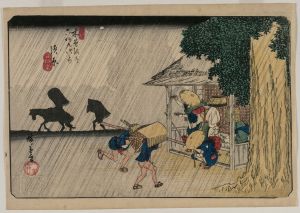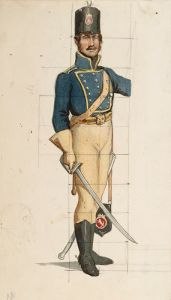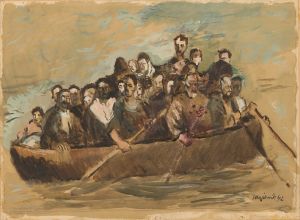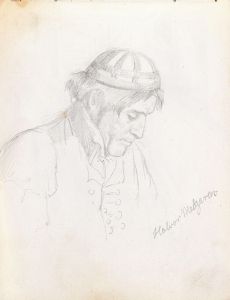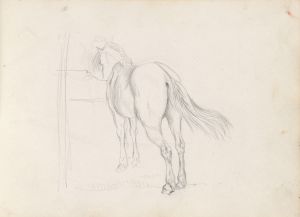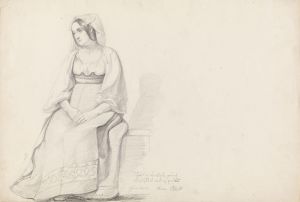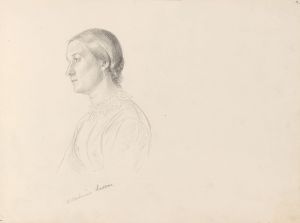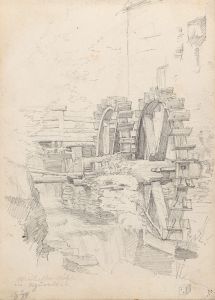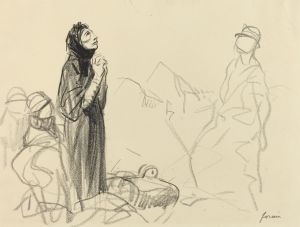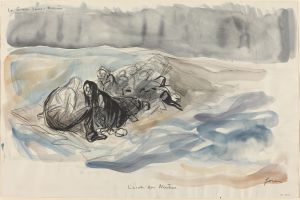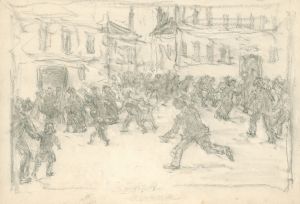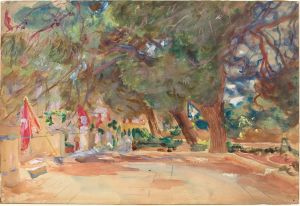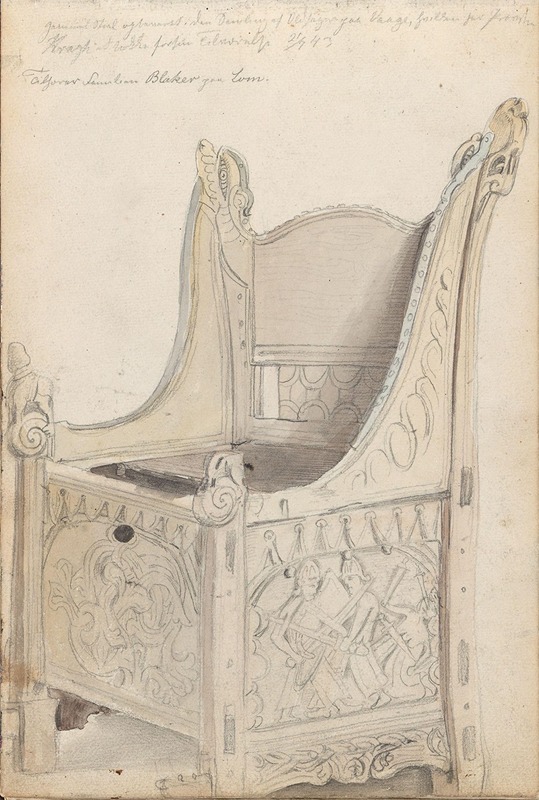
Blakerstolen
A hand-painted replica of Adolph Tidemand’s masterpiece Blakerstolen, meticulously crafted by professional artists to capture the true essence of the original. Each piece is created with museum-quality canvas and rare mineral pigments, carefully painted by experienced artists with delicate brushstrokes and rich, layered colors to perfectly recreate the texture of the original artwork. Unlike machine-printed reproductions, this hand-painted version brings the painting to life, infused with the artist’s emotions and skill in every stroke. Whether for personal collection or home decoration, it instantly elevates the artistic atmosphere of any space.
Adolph Tidemand (1814–1876) was a prominent Norwegian painter known for his depictions of traditional Norwegian life and culture during the 19th century. One of his works, Blakerstolen, is an example of his focus on rural themes and his ability to capture the essence of Norwegian folk traditions. The painting is named after "Blakerstolen," which refers to a specific chair or seat, often associated with a church or a significant location in Blaker, a village in Norway.
Blakerstolen reflects Tidemand's interest in documenting and preserving Norwegian heritage through art. His works often depicted scenes of rural life, religious practices, and folk customs, which were undergoing significant changes during his lifetime due to modernization and urbanization. Tidemand's paintings are celebrated for their detailed and realistic portrayal of people, costumes, and interiors, as well as their emotional depth.
The exact date of creation for Blakerstolen is not widely documented, but it is consistent with Tidemand's broader body of work, which spanned the mid-19th century. The painting is believed to have been inspired by Tidemand's travels throughout Norway, where he studied and sketched local traditions and everyday life. His works often served as a visual record of Norwegian culture during a time when national identity was becoming increasingly important.
Adolph Tidemand's art played a significant role in the Norwegian Romantic Nationalism movement, which sought to celebrate and preserve the country's unique cultural heritage. Alongside his frequent collaborator, Hans Gude, Tidemand created some of the most iconic images of 19th-century Norway. While Blakerstolen may not be as widely recognized as some of his other works, such as Haugianerne (The Haugeans) or Brudeferden i Hardanger (The Bridal Procession in Hardanger), it remains an important part of his artistic legacy.
Today, Tidemand's works, including Blakerstolen, are appreciated for their historical and cultural significance. They provide valuable insights into the lives of ordinary Norwegians during a transformative period in the nation's history. Many of his paintings are housed in museums and galleries, where they continue to be studied and admired by art historians and the general public alike.





